Ah, sheep. Along with cows, they’re often seen as the dumbest of the dumb in the animal kingdom.
But are there any truths to this perception? Are sheep really as dumb as bricks, or are they secretly the Einsteins of the furred kind?
You’d be surprised to know that sheep are, in fact, smart.
Join us as we explore fascinating facts about sheep and sheep intelligence!
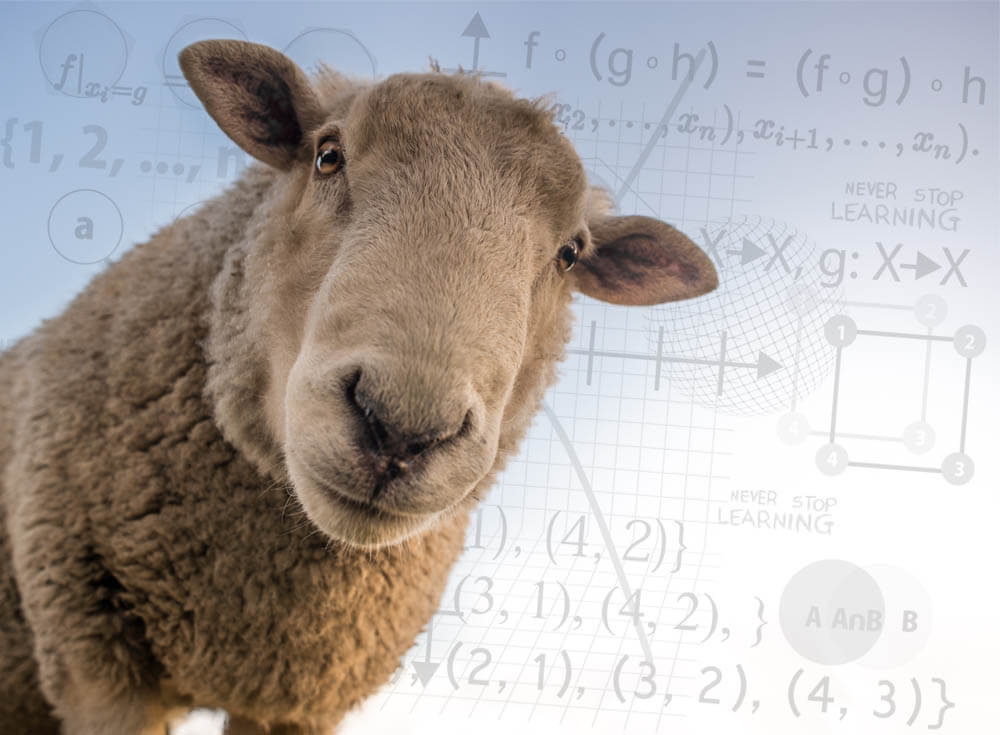
How smart are sheep? Here’s what the science says
Scientists have been studying sheep for decades. It’s thanks to their efforts that we now know the following things about sheep:
1. Sheep learn
Contrary to popular belief, sheep aren’t unthinking animals incapable of learning.
In one study, scientists had sheep participate in several feeding sessions. In each session, the scientists presented a bunch of colored buckets to the sheep but always placed food in the same colored bucket. It didn’t take the sheep long to figure out the other colored buckets held no food, which led to them focusing on the same colored bucket every time. Even more surprisingly, the sheep learned the association between food and that one specific color as quickly as rodents and monkeys did.
When the researchers repeated the test using shapes instead of colors, the result was the same: the sheep figured out that only one specific bucket shape provided food, so they ignored every other bucket shape.
Sheep can also learn via observation. For instance, lambs that have yet to drink milk from a bottle will know how to use a milk bottle after seeing other lambs feed from milk bottles. Adult sheep can identify food sources by watching other sheep graze in specific locations.
2. Sheep have object permanence
Researchers discovered that young sheep know a bucket contains food even when its lid is closed and the food can’t be seen. This is what psychologists call “object permanence” – the understanding that something exists even if it can’t be perceived by the senses. Human babies develop object permanence when they’re at least six months old, which is much later than when sheep develop this ability.
3. Sheep remember faces and other things
Several studies have shown that sheep can recall human faces.
So far, researchers have discovered that sheep can remember a minimum of 10 different humans and 50 different sheep for over two years. They can learn new faces quickly and recognize familiar facial features, allowing them to determine who’s who, and who’s friendly and who isn’t. They’re more relaxed when they’re around people or sheep they know aren’t dangerous.
In one specific study, researchers showed photos of various celebrities to sheep. Not only could the sheep distinguish between the human faces, but they also recognized facial expressions. And guess what? They preferred smiles to frowns!
Sheep can even recognize any name you give them – though this isn’t a guarantee they’ll approach you when you call them.
In another study, sheep remembered where food was concealed within a maze 22 weeks after they first found the food in the same maze.
Such an excellent memory is evidence that sheep are indeed clever animals.
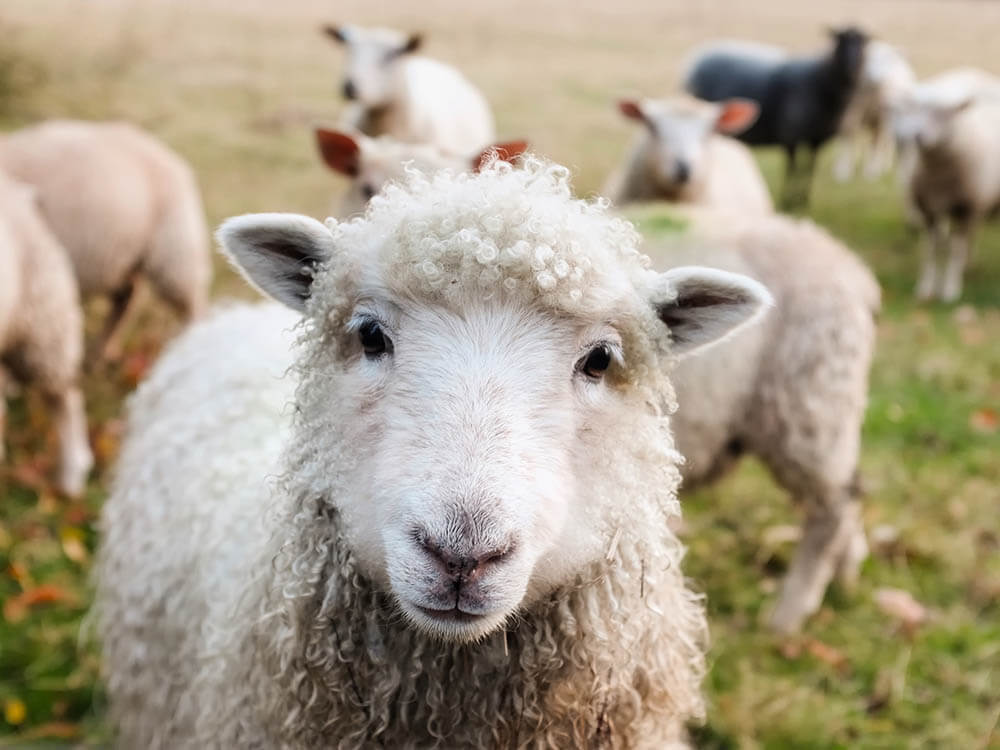
4. Sheep form relationships
Thanks to their ability to recognize and distinguish between different faces, sheep can develop bonds with other sheep. They can even have best friends – specific individuals they prefer staying physically close to, and whose side they won’t leave even if it means not moving to an area with better food. Being separated from those they’re fondest of can result in stress. And when a loved one dies, sheep grieve.
Ewes (female sheep) are particularly good at recognizing the faces of their young offspring, while a lamb as young as 1 or 2 months old can already recognize its mother’s face. Ewes are also great at knowing the faces of their companion females.
Even rams (male sheep) form friendships with other rams; if a weak friend gets into an altercation, the stronger ram will rush to its defense.
In one study, researchers showed sheep photographs of sheep and other creatures. Sheep preferred images of sheep of the same breed. A lone sheep felt more relaxed when looking at a photo of a sheep than of another animal species.
5. Sheep have awareness of themselves and their environment
Sheep know when they’re ill and seem capable of self-medication. Herders and researchers have observed them choosing to eat plants that can relieve their discomfort or even cure their illness.
They’re also intelligent enough to know when to take risks. For example, a healthy sheep will brave greener pastures populated by insects because it knows it can resist any harm they may inflict. On the other hand, unhealthy sheep will avoid such pastures.
6. Sheep use survival tactics
We all know sheep follow the herd. In fact, we use this behavior as proof of their stupidity.
Following the herd, however, is integral to sheep survival. They know that if they stick close to members of the flock, predators are less likely to eat them. This is why separating a sheep from its flock will make it anxious – it knows being alone exposes it to danger.
Sheep also watch out for each other and keep other sheep within their visual field while grazing. At any sign of danger, they will bleat to let others know.
7. Sheep have unique personalities
Both shepherds and researchers know that every individual sheep has a personality that’s uniquely its own.
Research has demonstrated that sheep have traits including sociability, boldness, anxiousness, activity level, and maternal style. These traits affect the bonds and friendships a sheep forms with others.
Thanks to every individual sheep’s unique personality, sheep have different roles to play in the flock. For example, the most sociable sheep usually lead the others when the flock needs to relocate.

8. Sheep experience a broad range of emotions
Like humans, sheep experience a wide array of emotions. According to many studies, sheep can feel happiness, sadness, anger, boredom, disgust, and fear.
In addition, these animals can have more complex emotions allowing them to become either optimistic or pessimistic. When isolated, sheep can even experience depression, whose symptoms include a drooped head and the avoidance of positive actions.
9. Sheep communicate through vocalization
Sheep communicate various emotions through vocalizations. Not only that, they can determine what another sheep is feeling by listening to the sounds they make.
To humans, the typical sheep “baa” doesn’t sound any different from any other “baa.” To sheep, however, these vocalizations have nuances that convey distinctive ideas.
For instance, rams make rumbling noises to attract ewes. They also use rumbling to show aggression toward other rams.
Ewes make gentle rumbling sounds to soothe and bond with their newborn offspring. Young lambs bleat to let their mothers know they’re hungry and need to feed. Ewes can distinguish between the bleating of their lambs and that of others’.
Bleating can indicate irritation, intolerance, or danger. Snorting can mean caution or aggression, so it’s usually heard when a sheep feels alarmed.
When a sheep is isolated from its flock, it baas out of anxiety.
When moving to another feeding area, the flock leaders baa to tell the other sheep to follow them. The rest of the flock baas in response to signal that they’re following their leaders. Whenever the flock enters a new area or anything new is introduced to the flock, the leaders also baa, which is echoed by their followers.
These are but some of the many sounds sheep produce to communicate with one another.
10. Sheep communicate through body language
Like many animals, sheep use body language to express emotions.
If you want to know what a sheep is feeling, observe its ears. Sheep ears tend to move around a lot more during negative emotional states. For example, if a sheep is afraid, in pain, or feels a lack of control, its ears move backward. Raised ears signify vigilance, wariness, or displeasure. When a sheep is surprised, their ears may point in different directions. It’s usually only when a sheep is content and relaxed that you’ll see its ears hanging loosely.
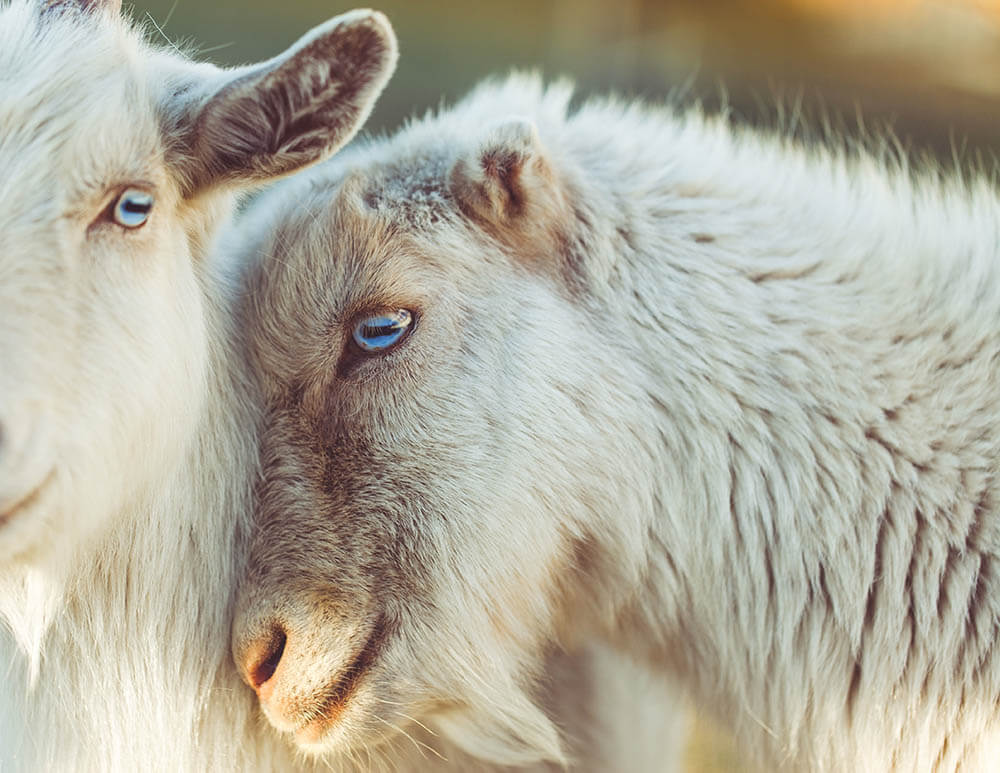
How smart are sheep compared to other animals?
Comparing the intelligence of different species is never an easy task because there are so many variables to consider.
There is some evidence, however, that sheep aren’t as smart as pigs. Pigs are extremely intelligent; they can recognize their reflection in a mirror unlike sheep and most other animals. Pigs can even pinpoint the location of food by looking at it in a mirror.
Like sheep, dogs don’t recognize themselves in the mirror. However, dogs are capable of learning various commands and can ace problem-solving tests. Some breeds can even learn complex skills not only via experience but also via observation. The most intelligent dogs are capable of independent thought, allowing them to make decisions in response to sudden situational changes.
Sheep are closer to goats and cows when it comes to intelligence level – not the smartest animals in existence, but definitely not as dumb as we think.
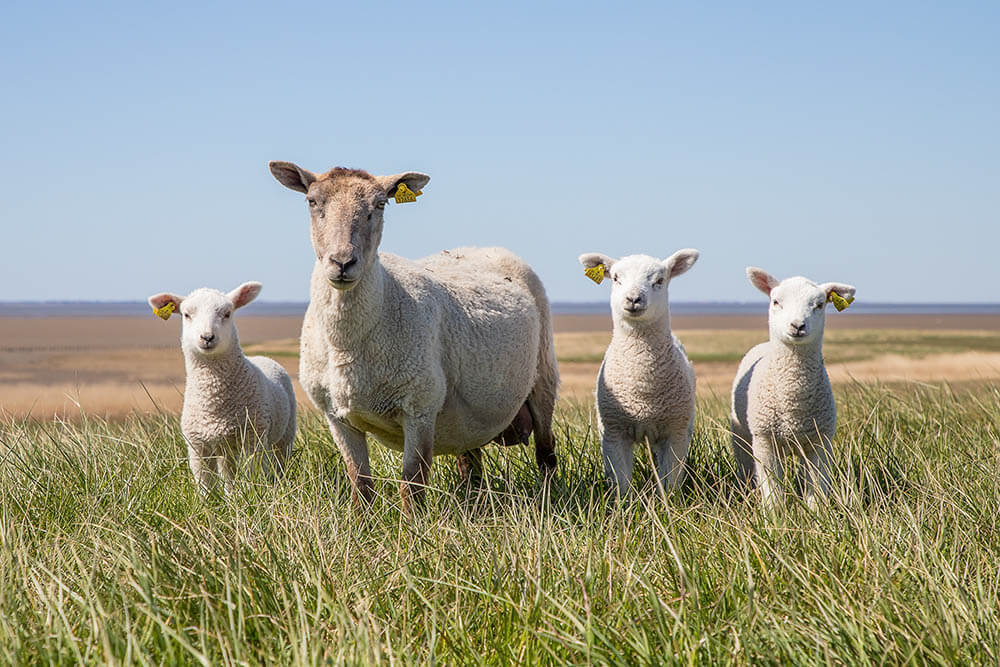
Other facts about sheep
Now that we know sheep are intelligent creatures, here are some other facts about sheep that you may not know about!
- Sheep have rectangular pupils that give them a visual field of between 270 and 320 degrees. This means they don’t need to turn their head to see what’s behind them – which is crucial to the survival of any prey animal.
- As herbivores, sheep only eat vegetation, with grass being among their preferred foods.
- The sheep’s stomach consists of four compartments, which is the reason why these animals are so effective at digesting vegetation.
- In 1996, scientists cloned the first mammal from an adult somatic cell (a cell other than a sperm or egg cell). It was a sheep they named Dolly. She died in 2003.
- There are more than 1,000 breeds of sheep. Some of them have unique characteristics. For example, Hebridean sheep can grow up to six horns. Merino sheep are known for their high-quality wool.
- The world is home to more than 1 billion sheep, with China having the most sheep.
- A group of sheep can be called a flock, herd, or mob.
- We call adult male sheep “rams,” adult female sheep “ewes,” young sheep “lambs,” and castrated adult males “wethers.”
- Lambs can walk mere minutes after they’re born.
- Sheep lack upper front teeth. Instead, they have a tough upper palate that the bottom teeth press against when they’re chewing food.
- The wool of domestic sheep never stops growing, so farmers need to shear it. Once, a Merino wether named Shrek escaped his sheep station. When he was found in 2004, his fleece weighed 60 pounds (27 kilograms) and contained wool that was worth 20 large men’s suits. In contrast, the average Merino fleece is around 10 pounds (4.5 kilograms) only.
- If a sheep falls on its back, it will have an extremely difficult time getting back on its feet without help. This is especially true of sheep that are overweight, pregnant, or have an extremely heavy fleece. A sheep can even die a slow, painful death after rolling on its back and getting stuck.
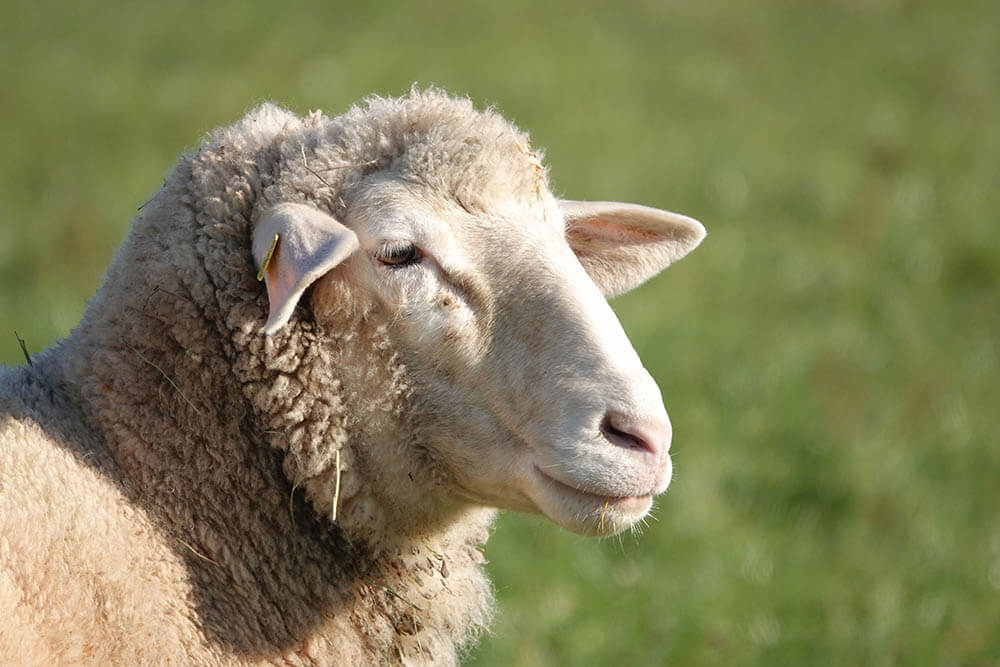
Final Thoughts
True, they’re not as smart as pigs or dogs, but sheep aren’t as dumb as we think. These remarkable animals can learn. They can remember both human and sheep faces. These communicate with other sheep, form close bonds with one another, and even self-medicate. These are all things only clever animals can do.
So the next time you see some sheep, give them a smile! Like any intelligent, emotionally complex animal, they deserve our love and respect.
